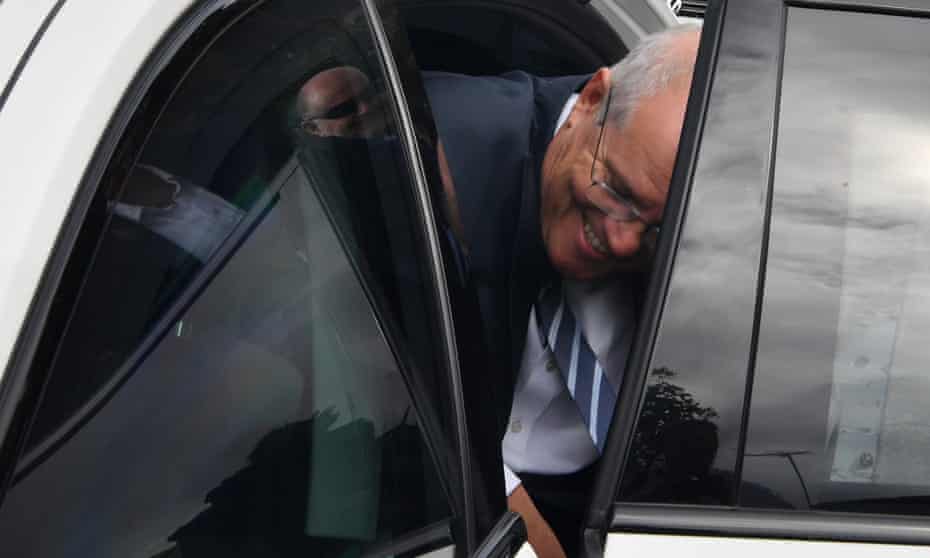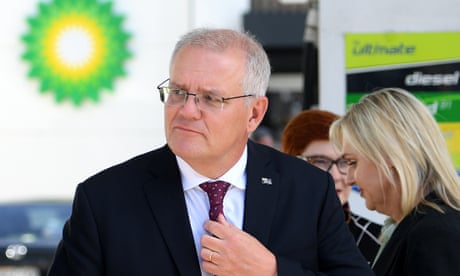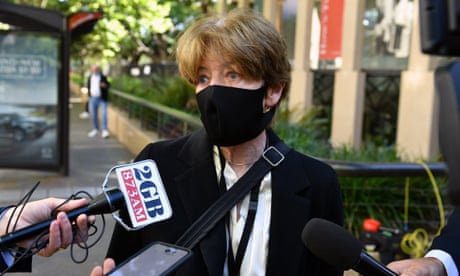Voters have cooled on the prime minister, particularly in the cities, so some government members want the focus on them – not the man in the Lodge.

But as the real contest creeps closer to being officially called, there’s a thorny problem for the Liberal campaign to navigate – how do you win an election when, for some voters, Scott Morrison is the problem?
The components of this challenge have been clear for some time.
Opinion polls show Morrison has lost standing over the past 12 months. Voter approval of Morrison in the Guardian Essential poll dived 19 points over the course of last year.

Morrison knows voters have cooled since the glory days of “ScoMo” in his baseball cap wandering around the country enthusing “how good”, so he has been busy setting up a “better the devil you know” election contest rather than a Sally Field one (“you like me, you really like me”).
But voters souring on the candidate isn’t the only conundrum for Morrison’s backroom to manage.
The other significant risk to war game is the persistence and virulence of blue-on-blue attacks – the recent character assassination by the conservative stalwart Concetta Fierravanti-Wells being a case in point.
These score-settling insurgencies (before Labor picks up the slack with negative advertising during the campaign) are ominous in the sense they have escalated as the real contest draws closer, which suggests there is every prospect they will go on happening in ways Morrison and his strategists can neither influence nor control.
If you are a professional political operation (and the Liberal party is) in this environment, the overriding objective becomes ensuring your marginal seat holders and candidates in targeted seats have the tools – both practical and rhetorical – to ride out a negative public backlash against the prime minister.
This is a really tough ask when low-information voters can talk your ear off about how Morrison gives them the creeps but they wouldn’t have a clue who their local member is. So less than ideal, it’s fair to say.
But sandbagging the local members becomes the only viable option a campaign has when the national mood sours on the incumbent, and combatants are lining up to roast your prime ministerial candidate, not furtively, but in plain sight.
To be clear. Archer isn’t a political drone. She says and does what she thinks, so I’m not suggesting she’s been coached intensively by a travelling posse of svengalis about how best to inoculate herself from an unpopular prime minister.
But her language, if you listen, is interesting.

On the ABC on Tuesday morning, Archer noted the only people in Australia who can actually vote Morrison out are the residents of Cook, the prime minister’s Sydney electorate.
She said Australia did not have a presidential system. The system here allows voters to make judgments on the quality of representation provided by their local members.
Archer encouraged voters to make the distinction between her and the prime minister. The looming referendum in Bass should be about her record, not Morrison’s. “If there was no value in local representation, why would we bother having elections,” Archer reasoned – adding “if we were all interchangeable, we wouldn’t bother doing this”.
Just in case her point wasn’t clear, she said: “The people of Bass are my boss and my loyalty lies with them.”
Archer is her own person. She’s not afraid to exercise her own judgments. But this language suggests a permission structure, either sanctioned or improvised (in the sense of making a virtue of necessity) that will probably be repeated in the electorates that will ultimately determine who wins the election.
Let’s call this “permission to distance”. Not overt disavowal. Just distance.
Given the current voter disaffection with Morrison crosses over in some places to disaffection with the Liberal party, we’ve also seen some Liberal candidates distance themselves from the usual party branding.
Dave Sharma, running in the Sydney seat of Wentworth, has recently denied he’s engaged in strategic distancing after accusations his campaign materials mimic the teal colour scheme of the independent candidate Allegra Spender.
‘Qualified for what?’: Labor questions Pru Goward’s appointment to AAT – video
Back in Tasmania, Eric Abetz is running a below-the-line campaign for the Senate with ubiquitous materials that do not mention the Liberal party. That fascinating improvisation reflects the fact Abetz was dumped from the No 1 spot on the Liberal ticket. But his current pitch also reflects the potent appeal of micro-parties and independents in the state.
So the sandbagging and inoculation strategy is clear enough.
What remains unclear at this point is whether operation permission to distance from Morrison can work. As they say in the classics, only time will tell.
No comments:
Post a Comment